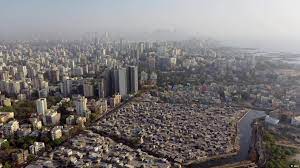
Urban Urbanization Connections
Urban Sprawl vs. Sustainable Cities: Can We Balance Growth with Environmental Responsibility?
Urbanization is an inevitable consequence of modernization and economic development. As cities expand and populations grow, the challenge lies in managing this growth in a manner that is both economically viable and environmentally sustainable. Urban sprawl, characterized by the uncontrolled expansion of urban areas into surrounding countryside, poses significant environmental, social, and economic challenges. In contrast, sustainable cities prioritize responsible planning, resource management, and environmental stewardship to create livable, resilient, and inclusive urban environments. This essay explores the dichotomy between urban sprawl and sustainable cities, examining the potential for balancing growth with environmental responsibility.
Urban sprawl refers to the unplanned, often rapid, and unrestricted expansion of urban areas, leading to the development of low-density, car-dependent communities on the outskirts of cities. This form of urban development is characterized by low-density housing, automobile dependency, loss of agricultural and natural lands, and increased infrastructure costs. The decentralized nature of sprawled cities necessitates car travel for most daily activities, contributing to traffic congestion, air pollution, and greenhouse gas emissions. Moreover, urban sprawl leads to the conversion of agricultural lands, forests, and natural habitats into residential and commercial developments, resulting in habitat loss and biodiversity decline. The spread-out nature of sprawled developments increases the costs associated with infrastructure maintenance, public services, and utilities, straining municipal budgets and resources.
In contrast, sustainable cities prioritize responsible urban planning, design, and management to create compact, efficient, and livable urban environments. These cities encourage compact, mixed-use development, reducing the need for car travel and promoting walkability, cycling, and the use of public transit. They also prioritize the preservation of green spaces, parks, and natural habitats, enhancing biodiversity, improving air quality, and providing recreational opportunities for residents. Sustainable cities promote the use of renewable energy sources, energy-efficient technologies, and sustainable water management practices to reduce environmental impact and resource consumption. Additionally, they aim to create inclusive, resilient, and socially cohesive communities by promoting affordable housing, equitable access to services, and community engagement in decision-making processes.
Achieving a balance between growth and environmental responsibility requires a multifaceted approach that integrates the principles of sustainable development into urban planning, policy-making, and governance. Some strategies to promote sustainable urbanization include implementing smart growth policies that promote compact, mixed-use development, reduce sprawl, and encourage the revitalization of existing urban areas. Investing in efficient and accessible public transportation systems, including buses, trams, and metros, can reduce car dependency, alleviate traffic congestion, and decrease greenhouse gas emissions. Protecting and enhancing green spaces, parks, and natural habitats within urban areas can improve air quality, enhance biodiversity, and provide recreational and aesthetic benefits to residents. Encouraging the adoption of renewable energy sources, energy-efficient technologies, and sustainable building practices can reduce energy consumption, mitigate climate change, and promote environmental sustainability. Furthermore, engaging stakeholders, including government agencies, private sector actors, civil society organizations, and local communities, in decision-making processes and fostering community participation can ensure that urban development initiatives are inclusive, equitable, and responsive to the needs and aspirations of all residents.
In conclusion, urban sprawl and sustainable cities represent two divergent paths of urban development, each with its own set of implications for the environment, economy, and society. While urban sprawl poses significant challenges related to land use, transportation, infrastructure, and environmental degradation, sustainable cities offer a viable alternative that prioritizes responsible planning, resource management, and environmental stewardship. Achieving a balance between growth and environmental responsibility requires a concerted effort from policymakers, urban planners, developers, and citizens to integrate the principles of sustainable development into urban planning, policy-making, and governance processes. By adopting smart growth policies, investing in public transportation, preserving green spaces and natural habitats, promoting renewable energy and energy efficiency, and engaging stakeholders in decision-making processes, we can create cities that are not only economically prosperous but also environmentally sustainable and socially inclusive.
By: Ojas Lath
Write and Win: Participate in Creative writing Contest & International Essay Contest and win fabulous prizes.


